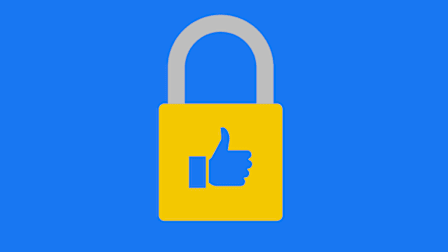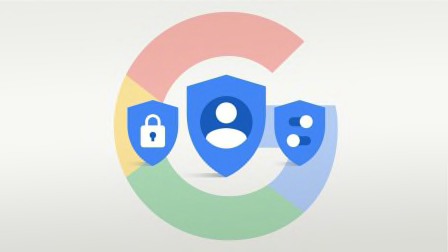I Said No to Online Cookies. Websites Tracked Me Anyway.
Companies may be showing you targeted ads even after you opt out of tracking on their websites, Consumer Reports finds

A while back I got a tip from Boltive, a tech company that helps businesses audit their privacy and security practices. You know those pop-ups you see all over the internet, asking permission to track you with cookies? The ones that make you deal with confusing little menus if you want to say “no”? A lot of the time, Boltive said, the controls don’t work.
You tell websites not to track you, but they do it anyway.
I’m jaded when it comes to the internet, but this was a bit surprising because certain privacy protections are mandated by law in Europe and California, and consumers are starting to see these pop-ups everywhere. I found the cookie settings annoying, but I was using them anyway. Were companies all over the internet just wasting my time?
ThomasBot's Big Adventure
The 21 websites we chose for ThomasBot included big, well-known companies such as American Express, FitBit, and Herman Miller, along with a number of smaller brands.
Here’s how it worked. A fresh ThomasBot went to each of these sites, opted out of cookies, and then clicked around inside the site like an interested customer, the same way I did. Afterward, each ThomasBot surfed the internet for months, taking screenshots of all the ads it saw.
We compared what those ThomasBots found to an otherwise identical bot that never visited the 21 sites. According to Boltive, the ThomasBot alter-ego didn’t see a single ad for any of the 21 brands.
The original ThomasBots saw plenty of them.
One ThomasBot added a ski glove to his cart on Backcountry.com—and subsequently saw more than 20 ads for those exact gloves. Another ThomasBot added a Fitbit Sense smartwatch to his cart, and then saw an ad for the same watch on a cake-decorating website. A ThomasBot shopped for an Aveeno daily moisturizing lotion, and later saw two ads for it.
All told, we saw what seemed to be targeted ads for 12 of the 21 companies in our experiment.

Source: Boltive Source: Boltive
Some of this could have been coincidence. For example, one of the ThomasBots saw ads for American Express after visiting the company’s website, while the other bots never saw an Amex ad. However, American Express is a huge company that does a lot of mass market advertising—it’s hard to be sure these were targeted ads. (When we asked the company about the ads, it would only say it was committed to safeguarding people’s choices and privacy.)
When we contacted Fitbit to ask about the fitness tracker ads that ThomasBot saw, the company assured us that we weren’t actually seeing targeted ads. “Fitbit’s consent management system respects the individual’s choices,” Andrea Holing, a Fitbit spokesperson, said via email.
But it’s bigger stretch to imagine a coincidence in cases like Backcountry’s, where we saw numerous ads for the exact gloves ThomasBot shopped for. Backcountry says it’s looking into the problem, and it blames the tech industry as a whole. “Targeted advertising services like Facebook and Google independently gather information outside of our control, which can affect what our customers may see on those platforms,” says Venkatesh Ananthanarayanan, Backcountry’s vice president of engineering.
ThomasBot also saw what appeared to be targeted ads for Fjällräven, an outdoor-equipment company, after opting out of tracking on its site. Handling customers’ privacy “is of the utmost importance to us,” says Steve Stout, a senior global director at Fenix Outdoor, Fjällräven’s parent company. “As such, we are reviewing the opt-out mechanism you identified to ensure it is clear and understandable to our website visitors and meets applicable compliance requirements.”
Several other companies that showed ThomasBot ads—including Hanna Anderson, Alex and Ani, Aveeno, and Herman Miller—didn’t respond to questions from CR.
As a consumer who takes the time to use these tools to try to protect my privacy, I found our results disheartening, even a little outrageous. One ironic example was OneTrust, a company that actually builds the cookie consent pop-ups that a lot of other websites use. We had a ThomasBot visit the OneTrust website and opt out of tracking. It later saw numerous ads for OneTrust’s services popping up on websites he visited.
OneTrust didn’t directly answer questions about what we saw, but spokesperson Ainslee Shea says that privacy law and web technology are “rapidly evolving” and that the company actively follows new developments to help consumers protect their privacy.
So what’s going wrong, not just on the OneTrust site, but across the web?
“I don’t think any of these companies are bad guys,” Desrosiers says. “They’re trying to do the right thing. But the tech industry spent 20 years trying to target you more minutely, and now we’re trying to bolt on tools to stop it. It’s just not built for this.”
Still, privacy experts say that companies need to take responsibility for the tracking that happens on their websites. “Ultimately the brand, or the retailer, whoever the first party is, they’re responsible,” says Don Marti, a vice president at CafeMedia, a digital ad management service. Marti, who has collaborated with CR on privacy projects, says the problem is many companies don’t put enough effort into setting up their privacy controls.
“It’s a big challenge for website developers, who are often under-resourced in doing their jobs,” he says. Managers have to invest a lot of programming time to incorporate the privacy technology into websites that are filled with complex, interconnected advertising tools.
There is a simpler solution, though. Instead of asking you if you want to opt out of tracking, companies could just choose not to track you in the first place. Or companies could set it up so that you can opt in if you want targeted ads to follow you all over the internet. And if companies don’t want to make those changes themselves, legislators could force the issue.
“Ultimately, this kind of targeted advertising should just be banned,” says CR’s Brookman. “That would be consistent with what people want.”
How You Can Limit Tracking Right Now
The pop-ups and privacy links on websites might not always work, but there are effective tools you can use to limit tracking, even if you can’t eliminate it entirely.
One thing that doesn’t typically work is just closing the cookie pop-ups without making a decision. It might seem like a life hack, but you can assume it’s usually the same as clicking “I accept.”
Use privacy protecting browser extensions. You can add extensions to your browser that will do a lot to protect your privacy. One is Disconnect, made by a company that frequently partners with CR on privacy investigations. Disconnect shows you how websites are trying to track you and blocks a lot of that data collection. CR’s privacy experts also recommend uBlock Origin.
Adjust your browser’s privacy settings. A lot of browsers have built-in controls you can use to block third-party cookies and other trackers. Open your browser’s preferences or settings, and you’ll usually find the controls in the privacy section.
Switch to a more private web browser. CR Security Planner recommends Firefox and Brave as two good options.




















